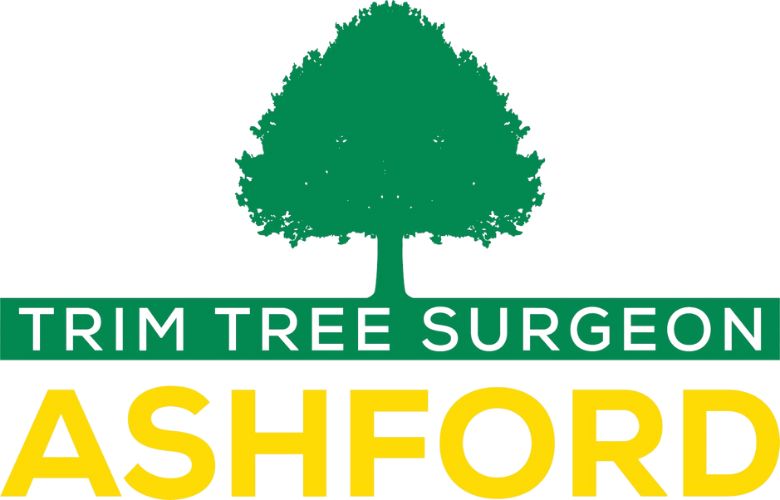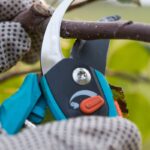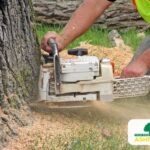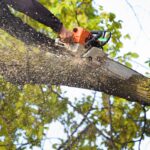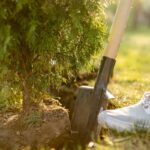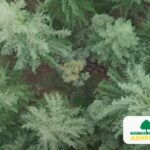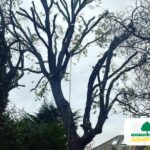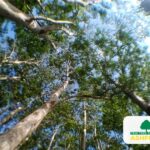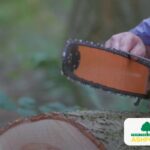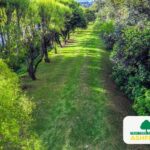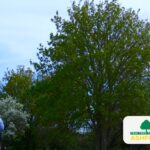Spring is the season of renewal and growth in the UK, where nature awakens from its winter slumber. Flowers bloom, animals emerge from hibernation and your trees need special care. Trees are the guardians of your landscape, standing tall and strong, providing shade and beauty.
To ensure their health and vitality, proper spring tree care is key: pruning, fertilising and pest management. Pruning gives trees a gentle trim, removing dead or diseased branches and allowing them to flourish. Fertilising provides essential nutrients for robust growth and vibrant foliage. Pests can wreak havoc on your trees, so pest management is essential.
This guide by our professional tree care company on spring tree care in the UK covers the importance of pruning, the benefits of fertilising and how to identify and manage tree pests effectively. Equip yourself with knowledge to take care of these majestic beings that grace our landscapes.
Understanding the Importance of Tree Pruning
Pruning trees is essential for their health and appearance, allowing them to grow strong and vibrant. Regular maintenance is crucial to ensure the longevity of your trees. Removing dead or diseased branches enhances the tree’s overall aesthetics and prevents potential hazards, such as falling limbs in storms. Pruning techniques vary according to the type and age of the tree, so it’s important to understand the specific needs of each species. Good pruning encourages better air circulation and sunlight penetration, reducing the risk of fungal infections and promoting healthy growth.
Bear in mind that over-pruning can harm a tree, so it’s best to seek advice from an arborist. Let’s now look at the advantages of fertilising your trees to further enhance their vitality.
The Benefits of Fertilizing Your Trees
When it comes to fertilizing your trees, you’ll be giving them the essential nutrients they need for healthy growth and robustness. Fertilizing can bolster their growth, reinforcing their structure and increasing their ability to withstand tough conditions.
Furthermore, fertilizing your trees will enhance their health, helping them to fight off pests and illnesses.
Providing Essential Nutrients
Fertilising your trees is vital to ensure they receive the essential nutrients they need for the best growth and health. Nutrient deficiency can cause stunted growth, yellowing leaves, and poor overall tree health.
Doing a soil analysis is an important first step to figure out the exact nutrient requirements of your trees. By understanding the composition of your soil, you can tailor your fertilisation approach to address any deficiencies or imbalances. This allows you to give the necessary nutrients that may be missing naturally in your soil.
Fertilisers can be used to add extra nutrients and foster healthy tree growth. Enhancing growth and durability needs a strategic fertilisation plan that considers the particular needs of every individual tree species as well as environmental factors such as climate and soil conditions.
Boosting Growth and Resilience
Boosting growth and resilience in your trees can be achieved by implementing a comprehensive tree care plan. This plan should consider the specific needs of each individual species and take into account environmental factors such as climate and soil conditions.
To achieve healthier, more productive trees with increased resistance to pests and diseases, follow these guidelines:
Prune regularly: Proper pruning helps remove dead or damaged branches, stimulating new growth and reducing the risk of disease.
Fertilise appropriately: Provide your trees with the necessary nutrients by using a balanced fertiliser specifically formulated for their needs.
Manage pests effectively: Identify potential threats early on and take appropriate measures to control them, whether through organic methods or targeted pesticide use.
By incorporating these practices into your tree care routine, you can ensure that your trees thrive and become more resilient. Enhancing overall tree health is vital for long-term success in maintaining a beautiful landscape.
Improving Overall Tree Health
To ensure the long-term health of your trees, it’s crucial to prioritize their overall health. Enhancing tree aesthetics isn’t just about improving their appearance, but also plays a major role in their vitality. Implementing cultural practices is essential for achieving this.
Pruning regularly can help improve appearance and prevent potential hazards by removing dead or diseased branches. It can also encourage healthy growth patterns by shaping the tree.
Fertilizing is also important for providing your trees with the right nutrients at the right time, which will help improve their overall health and resilience against pests and diseases. An arborist should be consulted to make sure the right fertilizer is chosen for your specific trees.
By prioritizing these cultural practices, a solid foundation will be set for identifying and managing any potential pests that may threaten your trees’ well-being.
Identifying and Managing Tree Pests
To effectively manage tree pests in the UK, it’s essential to know common pests that can cause harm. Early recognition and prevention are key to limiting the effect of these pests on your trees.
Regular monitoring, correct sanitation, and targeted treatments can help ensure your trees stay healthy and vigorous for years to come.
Common Tree Pests in the UK
Have you ever wondered about the pests that can cause havoc to your trees in the UK? Being knowledgeable about common pests is essential for tree pest control and prevention.
One of the most prolific tree pests in the UK is the oak processionary moth. This insect can defoliate oak trees and its caterpillars’ hairs can cause severe allergic reactions in humans and animals.
The emerald ash borer, which attacks ash trees, has caused widespread destruction across Europe.
Other common pests include aphids, scale insects, and woolly adelgids. Recognizing these pests and comprehending their behavior is key for successful tree pest prevention.
By spotting early signs of infestation, such as leaf discoloration or wilting, you can take measures to protect your trees from further damage. Early detection and prevention methods will ensure healthy trees during springtime care.
Early Detection and Prevention
Spotting early signs of infestation, such as leaf discoloration or wilting, can help protect your trees from further damage caused by common pests. Detecting these signs quickly enables you to take proactive measures to prevent the spread of tree diseases and maintain the health of your trees.
Inspect your trees regularly for any unusual changes in foliage, bark, or overall appearance, as this is crucial to identify potential pest infestations. Look for holes or tunnels in the trunk, chewed leaves or fruits, and the presence of insects or their eggs.
Addressing any signs of infestation promptly will reduce the risk of extensive damage and enhance the effectiveness of subsequent pest management techniques. To protect your trees’ growth and vitality, effective pest management techniques must be implemented, such as targeted treatments to eradicate pests.
Effective Pest Management Techniques
Implementing effective pest management techniques is like releasing an army of defenders to safeguard your trees from the damaging effects of prevalent pests.
When it comes to organic pest control, there are several natural pest repellents that can be used. Neem oil, for instance, is a powerful insecticide that targets a wide range of pests while being secure for the environment. Another option is garlic spray, which works as a deterrent against insects without harming beneficial organisms.
Furthermore, introducing predator insects like ladybirds or lacewings can help keep pest populations in check. By incorporating these natural methods into your spring tree care routine, you can guarantee the health and vigor of your trees while minimizing damage caused by pests.
Moving on to timing and techniques for pruning…
Timing and Techniques for Pruning
Pruning your trees at the right time and using the correct techniques can help promote healthy growth and improve the overall look of your garden. When it comes to pruning techniques, there are some key methods to bear in mind.
Firstly, make sure to remove any dead or diseased branches, as they can damage the tree’s health. Additionally, thinning out overcrowded branches allows for better air circulation and sunlight penetration.
In terms of pruning timing, it’s usually recommended to prune deciduous trees in their dormant winter months when they aren’t actively growing. Alternatively, evergreen trees can be pruned in early spring before new growth begins.
By adhering to these pruning techniques and timing guidelines, you can ensure that your trees thrive year-round.
Now that you know the importance of proper pruning, let’s move on to picking the right fertilizer for your trees…
Choosing the Right Fertilizer for Your Trees
When it comes to nourishing your trees, selecting the right fertiliser is essential for their growth and vitality. Choosing the right fertiliser can be tricky, but by following a few simple tips, you can ensure your trees get the nutrients they need.
Start by considering the specific needs of your trees. Different species have different nutrient requirements, so select a fertiliser that meets those needs. Additionally, take note of the NPK ratio on the fertiliser label. This ratio shows the percentage of nitrogen (N), phosphorus (P), and potassium (K) in the fertiliser.
Lastly, opt for slow-release fertilisers that supply nutrients steadily over time. With these fertiliser selection tips in mind, you can give your trees the best chance of thriving and staying healthy.
Now you’ve chosen the right fertiliser for your trees, it’s time to move on to integrated pest management for healthy trees.
Integrated Pest Management for Healthy Trees
To ensure the health of your trees, it’s essential to take an integrated approach that deals with pest control and encourages their overall well-being. By implementing effective pest management strategies, you can prevent infestations and keep your trees flourishing.
Here are some key approaches to consider:
Regular monitoring: Keep a close watch on your trees for any signs of pests or diseases. Early identification can help stop further harm.
Cultural practices: Maintain suitable tree care techniques such as pruning, watering, and mulching. Healthy trees are more resilient to pests.
Biological controls: Introduce natural predators or beneficial insects that feed on tree pests, reducing the requirement for chemical treatments.
Natural repellents: Use organic pest repellents like neem oil or garlic spray to discourage common tree pests.
By combining these pest control methods and natural repellents into your tree care routine, you can effectively manage pests while promoting the overall health of your trees.
Frequently Asked Questions
Can I prune my trees at any time of the year?
You can prune your trees at any time of the year, but there’s a best time to prune for optimal results. The pruning timeframe depends on the type of tree and its growth patterns. Generally, it’s recommended to prune deciduous trees during their dormant season in late winter or early spring before new growth begins.
Pruning during this time promotes healthy growth and reduces the risk of disease or damage to the tree.
What are the signs of a tree suffering from a pest infestation?
Tree pest infestation symptoms can vary depending on the type of pest, but there are some common signs to look out for. These include wilting leaves, discolouration, holes in the trunk or branches, and an increase in pests like ants or beetles around the tree.
To effectively control pests, it’s important to identify the specific pest and then use appropriate methods such as insecticides or biological controls. Regular monitoring and early intervention are key to preventing extensive damage to your trees.
How often should I fertilize my trees?
For optimal tree health, it’s recommended to fertilise your trees once a year in early spring. A good example would be a maple tree showing stunted growth and yellowing leaves. Applying a balanced, slow-release fertiliser can provide long-term nourishment.
It’s important to choose the best fertiliser for trees based on their specific needs. For example, nitrogen-rich options are great for promoting foliage growth, while phosphorus-based ones are ideal for root development.
Are there any natural alternatives to chemical pesticides for tree pest management?
There are several organic alternatives available for tree pest management, which can be beneficial in many ways. Natural pest control uses environmentally-friendly substances and techniques, avoiding the use of harmful chemicals.
These include introducing natural predators, using insecticidal soaps or oils, and physical barriers. Organic pest control reduces the risk of chemical exposure, protects beneficial insects, and promotes a healthier ecosystem.
Can I use the same fertilizer for all types of trees?
Using the same fertiliser for all types of trees may not be ideal. Different trees have different nutrient requirements, so it’s important to choose fertilisers which cater to their specific needs.
Organic fertilisers, derived from natural sources, provide benefits such as improved soil structure and long-lasting effects. However, they can take longer to release nutrients. Synthetic fertilisers provide quick results but may harm beneficial soil organisms if overused.
Understanding your tree’s needs will help you choose the right fertiliser for optimal growth and health.
Thank you for reading our post, please reach out to us if you enjoyed the article or if you want to explore some of our service please see below:
